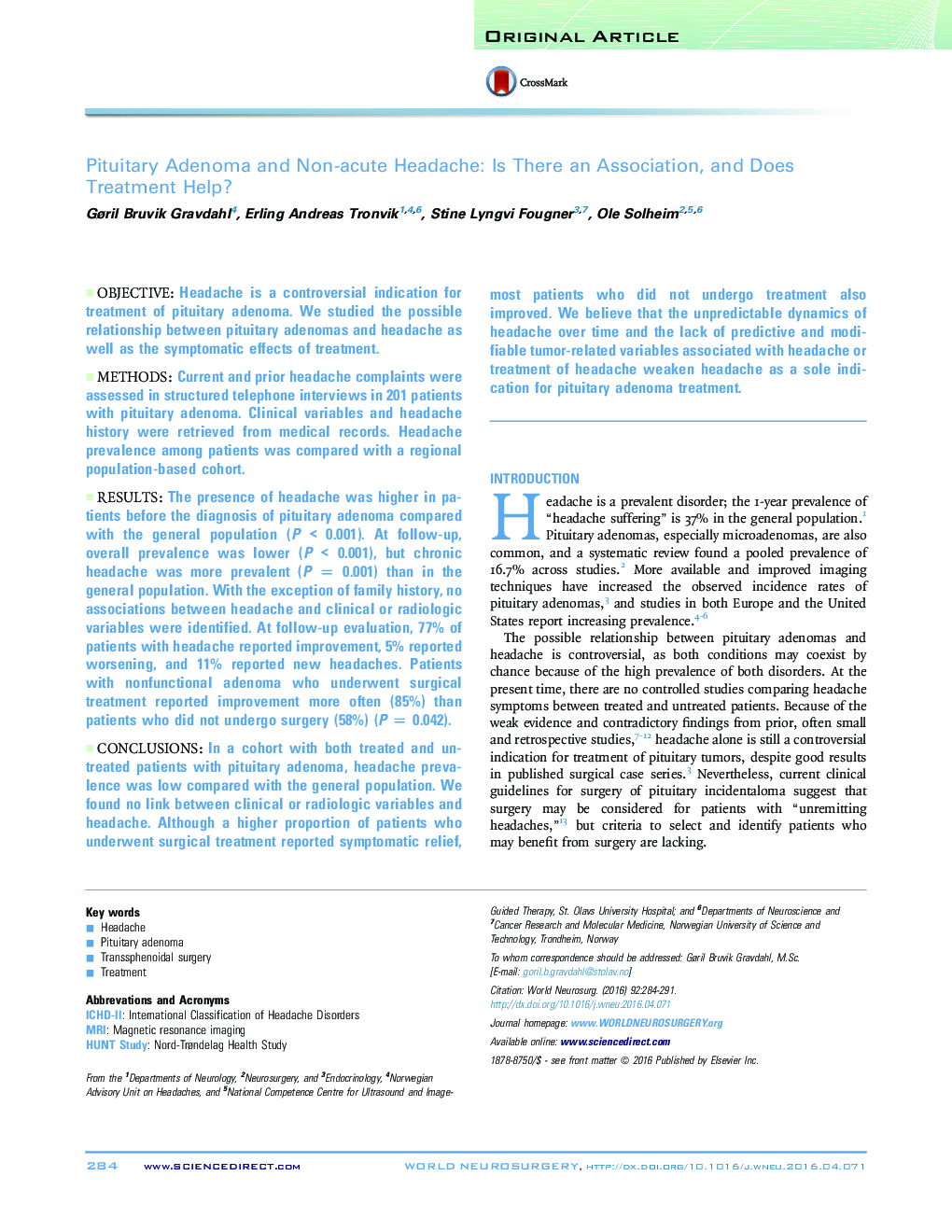| Article ID | Journal | Published Year | Pages | File Type |
|---|---|---|---|---|
| 3094714 | World Neurosurgery | 2016 | 8 Pages |
ObjectiveHeadache is a controversial indication for treatment of pituitary adenoma. We studied the possible relationship between pituitary adenomas and headache as well as the symptomatic effects of treatment.MethodsCurrent and prior headache complaints were assessed in structured telephone interviews in 201 patients with pituitary adenoma. Clinical variables and headache history were retrieved from medical records. Headache prevalence among patients was compared with a regional population-based cohort.ResultsThe presence of headache was higher in patients before the diagnosis of pituitary adenoma compared with the general population (P < 0.001). At follow-up, overall prevalence was lower (P < 0.001), but chronic headache was more prevalent (P = 0.001) than in the general population. With the exception of family history, no associations between headache and clinical or radiologic variables were identified. At follow-up evaluation, 77% of patients with headache reported improvement, 5% reported worsening, and 11% reported new headaches. Patients with nonfunctional adenoma who underwent surgical treatment reported improvement more often (85%) than patients who did not undergo surgery (58%) (P = 0.042).ConclusionsIn a cohort with both treated and untreated patients with pituitary adenoma, headache prevalence was low compared with the general population. We found no link between clinical or radiologic variables and headache. Although a higher proportion of patients who underwent surgical treatment reported symptomatic relief, most patients who did not undergo treatment also improved. We believe that the unpredictable dynamics of headache over time and the lack of predictive and modifiable tumor-related variables associated with headache or treatment of headache weaken headache as a sole indication for pituitary adenoma treatment.
